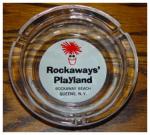Can anyone hazard a guess on this one? The plate is for the GPS 3 into 1B1, Columbia County, NY. The airport has a certified LPV approach to 500' with a mile vis. LNAV only MDA is 760-1, and is the same for Circling. What gets me is the LNAV/VNAV DA of 842-2 1/4 which is obviously higher than the LNAV only/Circling minima. Anyone know why?
http://aeronav.faa.gov/d-tpp/1212/06204R3.PDF
^^^^^^ link to the plate...couldn't get a copy as an image. Also check out the circling mins of 1SM for cats A/B...doesnt really seem feasible.
This plate is valid from 15 November 2012 to 13 December 2012...just in case they change it in the next cycle.







 Reply With Quote
Reply With Quote





Bookmarks